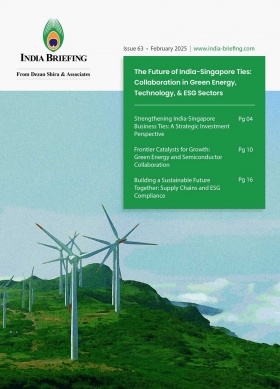Five Years of India-Australia Comprehensive Strategic Partnership: Key Milestones
Over the years, the India-Australia bilateral relationship has deepened. In 2009, India and Australia upgraded their partnership to a ‘Strategic Partnership,’ which was further enhanced to a Comprehensive Strategic Partnership (CSP) in 2020. This leap marked a new era of collaboration across multiple sectors, supported by a robust institutional framework that includes high-level visits, annual prime ministerial meetings, the 2+2 Defence and Foreign Ministers’ Dialogue, and various Joint Working Groups (JWGs) focusing on energy and defense.
Bilateral and economic ties between the two countries have experienced remarkable growth, expanding into both traditional and emerging areas. This has opened new avenues for engagement, positioning the India-Australia partnership as a key pillar of regional stability and global cooperation.
ALSO READ: Australia’s Strategic Investments in India’s Fintech, Space Sectors
India-Australia relations mark five years of comprehensive strategic partnership
India’s Union External Affairs Minister S. Jaishankar has highlighted the expansion and diversification in the relationship between India and Australia over the past five years. On June 4, 2025, which marked the fifth anniversary of the India-Australia CSP, Jaishankar acknowledged the growing depth of collaboration across various sectors between the two economies.
On June 4, 2025, Australia’s Deputy Prime Minister, Richard Marles, engaged in discussions with India’s Union Minister of Defence, Rajnath Singh, aimed at advancing bilateral defense cooperation. These conversations are expected to continue in 2025 during the third round of the India-Australia 2+2 Ministerial Dialogue.
Both countries cooperate closely through key regional groupings such as the Quad—alongside the US and Japan—and the Supply Chain Resilience Initiative (SCRI), which aims to strengthen supply chains across the Indo-Pacific. Their relationship is underpinned by a shared commitment to democratic values, Commonwealth traditions, and growing economic and political engagement.
Australia overtakes Norway as India’s top salmon supplier
Australia has emerged as India’s leading source of fresh and chilled salmon, overtaking Norway in a significant development for the Australian seafood export industry. As per data released by the Australian Trade and Investment Commission on May 15, 2025, in 2025, high-quality salmon from the Australian state of Tasmania accounts for 75 percent of India’s fresh whole Atlantic salmon imports—a sharp increase from 25 percent in 2023.
India’s overall salmon imports also grew substantially, increasing by 82 tonnes, or 37.4 percent, year-on-year (y-o-y)—signaling a rising demand for premium seafood products.
|
Value of Imported Salmon in India Between 2020–2024 (Values in A$ ‘000) |
|||||
|
Exporting country/region |
2020 |
2021 |
2022 |
2023 |
2024 |
|
World |
2,010 |
3,007 |
3,787 |
3,787 |
4,493 |
|
Australia |
– |
– |
– |
929 |
3,335 |
|
Norway |
1,865 |
3,007 |
3,787 |
2,729 |
1,000 |
|
Chile |
– |
– |
– |
– |
158 |
|
Canada |
– |
– |
– |
129 |
– |
|
Japan |
20 |
– |
– |
– |
– |
|
Netherlands |
3 |
– |
– |
– |
– |
|
United Kingdom |
122 |
– |
– |
– |
– |
Source: Trade Map, International Trade Centre (2025)
Tariff reforms under India-Australia ECTA drive price competitiveness
The Australia-India Economic Cooperation and Trade Agreement (AI-ECTA) has played a pivotal role in making Australian salmon more competitively priced in India. Since 2022, import duties on fresh, chilled, and frozen salmon have dropped from 30 percent to 12.9 percent, with complete tariff elimination expected by 2028. This has given Australian exporters a notable edge over other global suppliers.
Following the strong reception of Tasmanian salmon, other premium Australian seafood products — including Toothfish, bluefin tuna, barramundi, lobster, and oysters — are poised to enter India’s fast-growing premium food market.
Expanding trade ties through the ECTA
Economic cooperation between the two countries received a major boost with the signing of the India-Australia ECTA on April 2, 2022, which came into effect on December 29, 2022. The agreement opens new avenues of trade and investment, facilitating increased business activity, entrepreneurial growth, and job creation in both countries.
In the financial year (FY) 2024-25, bilateral trade reached US$24.105 billion, reflecting a marginal increase in trade activities between the two countries. According to the Ministry of Commerce and Industry, in FY 2024-25, Australia ranks as India’s 14th-largest trading partner, with bilateral trade experiencing stable growth y-o-y.
|
India-Australia Bilateral Trade (Value in US$ Million) |
|||||
|
Trade activities |
FY 2020-21 |
FY 2021-22 |
FY 2022-23 |
FY 2023-24 |
FY 2024-25 |
|
India’s exports to Australia |
4,043.88 |
8,283.13 |
6,951.32 |
7,940.75 |
8,578.84 |
|
Growth (%) |
|
104.83 |
-16.08 |
14.23 |
8.04 |
|
India’s imports from Australia |
8,247.30 |
16,756.17 |
19,011.31 |
16,159.20 |
15,527.14 |
|
Growth (%) |
|
103.17 |
13.46 |
-15.00 |
-3.91 |
|
Total Trade |
12,291.17 |
25,039.30 |
25,962.62 |
24,099.95 |
24,105.98 |
Source: Department of Commerce, Ministry of Commerce and Industry, GoI
|
India’s Imports from Australia (Value in US$ Million) |
|||
|
HS Code |
Commodity |
FY 2023-24 |
FY 2024-25 |
|
0713 |
Drid leguminous veg shld w/n skinned/split |
617.02 |
1,365.65 |
|
2601 |
Iron ores and concentrates, including roasted iron pyrites iron ores and concentrates, other than roasted iron |
331.48 |
263.27 |
|
2603 |
Copper ores and concertrates |
302.04 |
669.63 |
|
2701 |
Coal briquettes ovoids and similar solid fuels manufactured from coal |
10,775.67 |
6,848.07 |
|
5201 |
Cotton, not carded or combed |
140.34 |
258.23 |
|
7108 |
gold (including gold pltd wth pltnm) unwrought or in semi manufactured forms/in powder form |
1,993.57 |
3,387.96 |
|
7602 |
Aluminum waste and scrap |
152.27 |
196.87 |
|
4403 |
Wood in the rough, whether or not stripped of bark or sapwood, or roughly squared |
92.05 |
158.70 |
|
3206 |
Other coloring matter inorganic product of kind used as luminophores w/n dfnd chmclly |
153.75 |
132.93 |
|
7404 |
COPPER WASTE AND SCRAP |
38.48 |
50.57 |
Source: Department of Commerce, Ministry of Commerce and Industry, GoI
|
India’s Exports to Australia (Value in US$ Million) |
|||
|
HS Code |
Commodity |
FY 2023-24 |
FY 2024-25 |
|
2710 |
Petroleum oils and oils obtnd frm bitmns mnrlother than crude prpn nes;cntng70% or moreby weight of these oils |
3,805.48 |
4,476.26 |
|
3004 |
Mdcmnts (excl itms of 3002,3005 / 3006) fr thrputc/prphylctc uses in measurd dosesor in pckngs fr rtl sale |
394.07 |
419.48 |
|
4011 |
New pneumatic tyres, of rubber |
54.77 |
57.63 |
|
6109 |
T-shrts,snglts and othr vests,knttd/crchtd |
57.81 |
66.98 |
|
6302 |
Bed linen, table linen, toilet linen and kitchen linen |
61.04 |
78.41 |
|
7102 |
Diamonds, whether or not worked, but not mounted or set |
107.61 |
93.04 |
|
7113 |
Articles of jewellery and parts thereof; of precious metal/of metal clad with precious metal |
167.60 |
206.24 |
|
8421 |
Centrifuges, including centrifugal dryers; filtering or purifying machinery and apparatus, for liquids or gases |
13.74 |
14.99 |
|
8504 |
Electrical transformers, static converters (for example, rectifiers) and inductors |
41.36 |
93.53 |
|
8703 |
Motor cars and other motor vehicles for transport of persons(excl of 8702) incl racing cars etc. |
132.87 |
132.74 |
Source: Department of Commerce, Ministry of Commerce and Industry, GoI
The ECTA has especially benefited key exports sectors such as textiles, pharmaceuticals, chemicals, and agriculture, positioning both countries for greater economic resilience and interdependence.
Economic cooperation
The Australia-India Economic Cooperation and Trade Agreement (ECTA), effective from December 29, 2022, offers substantial trade benefits to both countries. Over 85 percent of Australian goods exports to India are now tariff-free, with this figure expected to reach 90 percent by January 2026. Meanwhile, 96 percent of Indian imports to Australia are tariff-free, rising to 100 percent by 2026. This agreement allows Australian businesses to access India’s rapidly growing market of 1.4 billion people, facilitating trade diversification. As of December 24, 2024, negotiations for a Comprehensive Economic Cooperation Agreement (CECA) are in progress, with 10 formal rounds and inter-sessional discussions held so far.
Critical minerals
Australia possesses abundant critical minerals essential for low-emission technologies, and these resources play a significant role in international diplomatic negotiations. The extraction of these minerals and the development of domestic processing capabilities are crucial for establishing secure supply chains. India, which heavily relies on imports for its manufacturing industry, ranks second globally in steel production and aims to decarbonize, making it a natural partner for Australia.
Consequently, Australia and India have an opportunity to strengthen their partnership in the critical minerals sector, essential for the global green transition. India’s Critical Minerals Mission aims to enhance domestic production and recycling, aligning with its growth goals in electronics and renewable energy.
The 2023 Australia-India Critical Minerals Investment Partnership has identified five key projects—two for lithium and three for cobalt—for joint investment, reinforcing collaboration. Both countries are involved in multilateral initiatives to secure critical mineral supply chains and reduce reliance on concentrated production, especially from China.
As part of the updated India Economic Strategy to 2035, there are two Australian Government-funded research and development (R&D) partnerships:
- The AUD12.2 million India Australia Critical Minerals Research Partnership, which aims to establish sustainable and resilient supply chains for critical minerals and materials.
- The AUD10.4 million India Australia Green Steel Research Partnership, focused on minimizing greenhouse gas emissions in steelmaking.
Investment flow
According to the Department for Promotion of Industry and Internal Trade (DPIIT), from April 2000 till March 2025, Australian investments in India total approximately US$1.526 billion. Australia ranks 25th in foreign direct investment (FDI) in India.
By the end of 2022, Australia’s investment stock in India stood at US$17.6 billion, while India’s investment in Australia totaled US$34.5 billion. India’s economic growth presents substantial opportunities for Australian goods and services, particularly in sectors such as agriculture, minerals, resources, education, and skills training, while also creating new two-way investment pathways, especially in renewable energy.
Australian companies in India
Several major Australian companies are actively engaged in the Indian market across diverse sectors, including:
- Macquarie Group: Provides advisory and capital-raising services for corporate and government clients, specializing in mergers and acquisitions.
- ANZ Bank: Operates in India, offering personal banking and debt investments through bonds and notes.
- BHP Billiton: A global mining leader that supplies iron ore, copper, oil, gas, and metallurgical products, with offices in Gurugram.
- Wesfarmers: Australia’s largest conglomerate, dominating the retail space, including the Bunnings hardware chain.
- Telstra Ventures: The venture capital arm of Telstra, investing in technology companies to foster synergistic revenues.
Indian companies in Australia
Prominent Indian companies making significant contributions in various sectors include:
- Bank of Baroda: Established in 1908, offers a range of banking services, including commercial and personal banking.
- Sterling and Wilson Solar Ltd: Specializes in providing complete turnkey solutions for engineering, procurement, and construction in the solar energy sector.
- Tata Consultancy Services (TCS): Based in Mumbai, TCS is a leading global IT services provider with approximately 450,000 employees.
- Infosys: Headquartered in Bangalore, Infosys employs around 250,000 individuals across 46 countries, delivering traditional IT services and solutions.
India-Australia Double Taxation Avoidance Agreement (DTAA)
The India-Australia Double Taxation Avoidance Agreement (DTAA), effective since December 30, 1991, has been revised multiple times to eliminate double taxation on income earned by individuals or entities in both countries. The agreement clarifies tax treatment for residents and non-residents, covering taxes on income and wealth, while encouraging transparency in tax matters. The DTAA ensures that foreign investors are not taxed twice on income, offers tax relief, and helps prevent tax evasion.
Withholding tax rates under the DTAA are favorable, including 15 percent for dividends and interest, and 10 percent-15 percent for royalties. The agreement also outlines taxation rules for capital gains, fees for technical services, and both independent and dependent personal services. It provides relief through tax credits for taxes paid in one country against those in the other.
Conclusion
As India and Australia mark five years of their Comprehensive Strategic Partnership, their bilateral ties continue to evolve into a robust and multidimensional relationship. From defense and strategic cooperation to trade, investment, and critical minerals, both countries are leveraging their shared democratic values and economic complementarities to build a resilient partnership.
The operationalization of the ECTA, ongoing CECA negotiations, and growing industry linkages underscore a shared vision for regional stability, sustainable development, and mutual prosperity. With sustained high-level engagement and expanding collaboration across key sectors, the India-Australia partnership is poised to play an increasingly pivotal role in shaping the Indo-Pacific landscape.
(With inputs from Melissa Cyrill and Archana Rao.)
(This article was originally published on September 27, 2024. It has since been updated June 13, 2025.)
About Us
India Briefing is one of five regional publications under the Asia Briefing brand. It is supported by Dezan Shira & Associates, a pan-Asia, multi-disciplinary professional services firm that assists foreign investors throughout Asia, including through offices in Delhi, Mumbai, and Bengaluru in India. Dezan Shira & Associates also maintains offices or has alliance partners assisting foreign investors in China, Hong Kong SAR, Vietnam, Indonesia, Singapore, Malaysia, Mongolia, Dubai (UAE), Japan, South Korea, Nepal, The Philippines, Sri Lanka, Thailand, Italy, Germany, Bangladesh, Australia, United States, and United Kingdom and Ireland.
For a complimentary subscription to India Briefing’s content products, please click here. For support with establishing a business in India or for assistance in analyzing and entering markets, please contact the firm at india@dezshira.com or visit our website at www.dezshira.com.
- Previous Article India to Mandate Disclosure of Workplace Harassment, Maternity Compliance in Board Reports
- Next Article India Schedules First Digital Population Census for 2027: What You Need to Know










